
Joel Babb, chronicler of the complex architecture of Boston and the natural intricacies of the Maine woods and the sea, began his career as an abstract expressionist. “I had no patience for older art then,” he says. “Over time I got reversed. I became much more interested in earlier art.” He was an avid student of art history at Princeton, however, and was impressed by his seminar with Wen Fong, who illustrated the way Chinese artists revered and emulated the past.
After Princeton, he went to Rome and Florence. He had studied perspective in art history but encountered it in real life in the art and architecture there. “Once you have seen the Sistine Chapel and the Raphaels of the Stanza,” he explains, “your scale is set to a different starting point.” He saw the built realization of Alberti’s and Brunelleschi’s study of the ancient architecture of Rome.
“It felt as if someone handed me a violin and said ‘Play!’ I didn’t know how to play. I needed to start over,” he says. Babb decided to dedicate himself to painting rather than art history and returned to the U.S. to pursue an MFA at the School of the Museum of Fine Arts in Boston. The museum, in addition to its treasures of Western art, has a fine collection of Chinese art. In addition to the perspective in Renaissance and classical painting, he was intrigued by the Asian use of isometric perspective, “a whole different way of constructing space. I began studying perception, how the mind apprehends what it sees—what is the process of seeing.”
Diese Geschichte stammt aus der Natural Beauty-Ausgabe von American Art Collector.
Starten Sie Ihre 7-tägige kostenlose Testversion von Magzter GOLD, um auf Tausende kuratierte Premium-Storys sowie über 8.000 Zeitschriften und Zeitungen zuzugreifen.
Bereits Abonnent ? Anmelden
Diese Geschichte stammt aus der Natural Beauty-Ausgabe von American Art Collector.
Starten Sie Ihre 7-tägige kostenlose Testversion von Magzter GOLD, um auf Tausende kuratierte Premium-Storys sowie über 8.000 Zeitschriften und Zeitungen zuzugreifen.
Bereits Abonnent? Anmelden

FULL EXPOSURE
Photographer Conor Martin documents the present using photographic methods of the past.
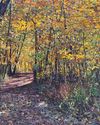
Autumnal Light
The landscapes and nature scenes of painter Jennifer Sowders are irresistibly tactile, filled with varying textures that seem to leap off the canvas.
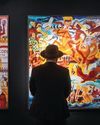
Art for All
Members of Art Dealers Association of America come together for a philanthropic affair.
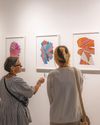
Modern Marketplace
Redwood Art Group brings together the San Diego region for another class-act celebration of contemporary artwork.
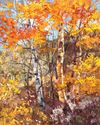
An Enchanting Evening
Scottsdale Artists’ School knows how to throw an art party.

Timeless Tales
Soft, warm undertones underscore the mood of enchantment that runs through Nom Kinnear King’s paintings.

Next Exit New York
Coming off his series that focused on San Francisco and Los Angeles freeway signs, artist Eric Nash’s sights are now set on New York. Now on view at George Billis Gallery's Manhattan location are seven of Nash's new oil paintings and two drawings that explore the signage of New York City freeways. Although Nash's work is tightly rendered, he doesn’t consider himself a photorealist, but rather someone who utilizes those techniques to express ideas.

Monster Mash
Vampires, witches, ghouls and all things that go bump in the night are the theme of the exhibition Monster Mash, now at Abend Gallery.

Inside/Outside
Those familiar with Geoffrey Johnson's populated by inky figures and trailing shadows that bleed into the wet streets, and architectural elements obscured to varying degrees by the misty atmosphere.
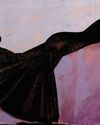
Bold Figures; Bold Color
For Brooklyn based painter J Louis, it’s all about balance, which can mean many different things in a composition, but for Louis, it’s about balancing his female figures among a unique landscape of color.